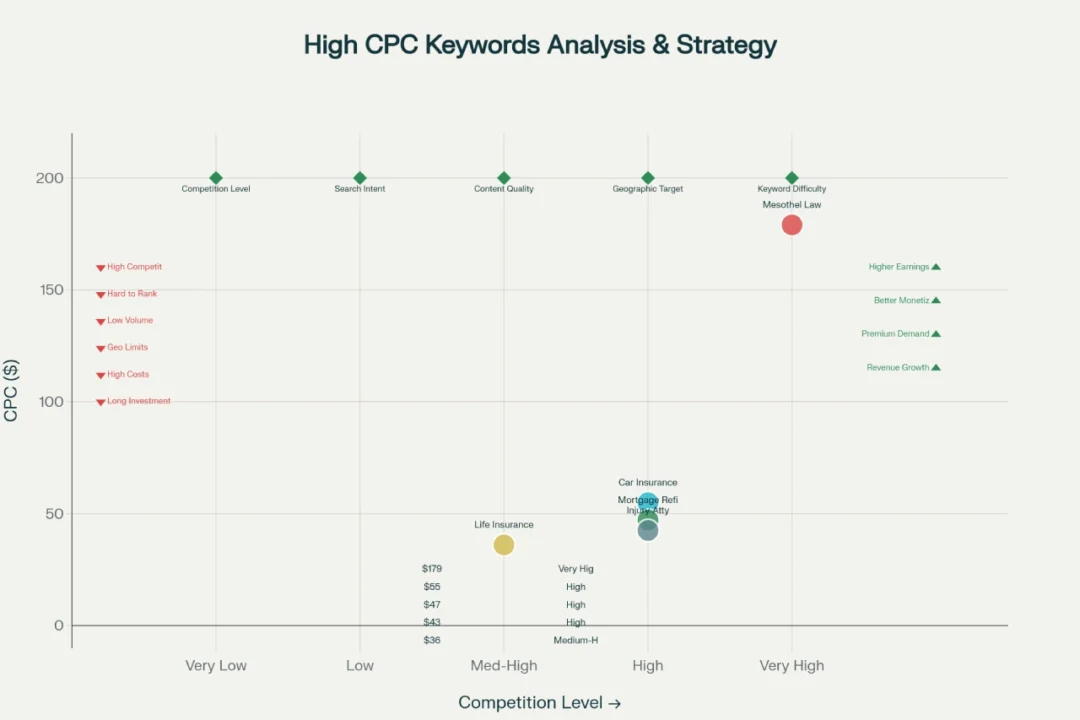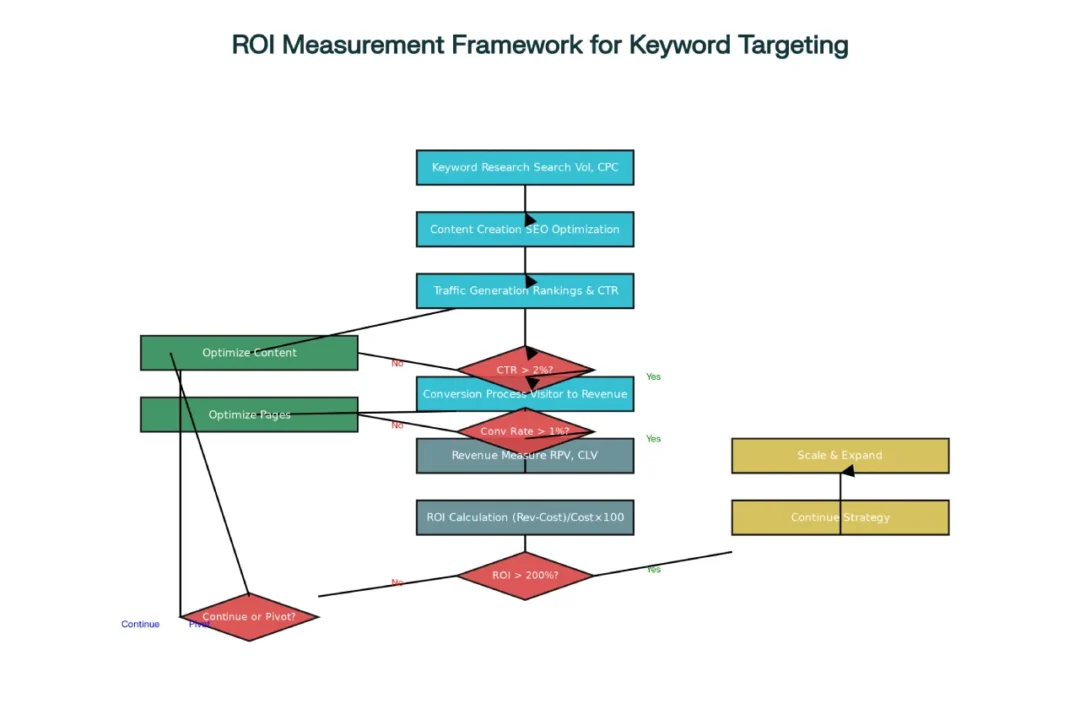The question is – Do High-Paying Keywords Really Increase Your Revenue? so lets find this. The High paying keywords as per research with actual figures -to a large extent – can increase your earnings but you still facilitate the success of such lucrative niche through various means. The correlation between high CPC (Cost per Click) keywords and revenue is not an aggregate proportionality, targeting expensive words is only the best case scenario.
Read Also: Japan vs Brazil: Can the Samurai Blue Break Their Jinx Against the Seleção?
Understanding High-Paying Keywords and Revenue Potential
High paying keywords are those where the advertisers pay huge money per click and can go as high as $50, $60 or even more than $400 to $800. These keywords tend to be in high-value verticals including finance, insurance, legal and healthcare where the customer lifetime value of a client is very valuable.
Studies apparently show that the most expensive keywords are “mesothelioma law firm” ($179.01), car insurance quotes” ($54.91), and mortgage refinance” ( $47.12) But just because there are high CPC numbers doesn’t mean creators actually make big bucks.

Key Success Factors for Revenue Generation
1. Commercial Intent vs. Search Volume
The biggest difference between whether or not a keyword (and the website that it leads to) is actually making money is relevance—the searchers must have commercial intent, as opposed to just some having high search volume. Low search volumes on long-tail keywords compare higher ROI because they draw users who are nearer to purchasing.
Studies have found that long tail keywords convert up to 36%, compared with even the very best performing landing pages which only convert at 11.45%. This stark contrast is why so many successful content creators hone in on narrower, intent-driven phrases rather than broad terms with lots of volume.
Read Also: YouTubers Dan and Phil Reveal Their Romantic Relationship: A Milestone for Their Fans
2. Geographic Targeting Requirements
High CPC returns greatly rely on it being traffic more from the developed countries, especially the USA. Creators who do not have their content directed specifically to international demographic continue using the same high paying keywords, yet earn considerably less. This geographical ban is a major bottleneck for content creators worldwide.
3. Competition and Ranking Difficulty
One of the main problems when dealing with expensive keywords is their potentially high level of competition. Keywords over $50 average CPC generally are highly competitive terms with strong domains or brands, and heavy marketing budgets. This is because these terms are still most often dominated by larger and more established sites, (or even “just newer”, it means the same thing). This means that rolling out with new-related content on a new-related internet buzz day when you don’t have page authority / trust generally means that your page makes no money.
Read Also: Naomi Osaka Cuts Short On-Court Interview After Victory in Osaka: ‘I’m Sorry’
Real-World Revenue Results
Several documented cases demonstrate both successes and failures with high-paying keyword strategies:
Success Stories:
- One blogger reported earning $350 monthly from AdSense by implementing high CPC keyword strategies
- Another achieved $600 monthly earnings with a 213% increase in backlinks and guest posts
- A finance company using “mortgage refinance rates” saw a 40% increase in qualified leads
- An e-commerce campaign targeting “best Shopify templates” achieved a 300% ROI increase
Common Challenges:
- Many content creators report high CPCs but no actual conversions
- Low-quality traffic that doesn’t convert despite high keyword costs
- Difficulty ranking organically for competitive terms

The ROI Measurement Framework
To determine whether high-paying keywords actually increase revenue, content creators must track specific metrics beyond just CPC values:
Essential Metrics:
- Conversion Rate: Percentage of visitors taking desired actions
- Customer Lifetime Value (CLV): Long-term revenue per customer
- Cost Per Acquisition: Total cost to acquire each customer
- Revenue Per Visitor: Average earnings per site visitor
- Time to Results: Duration needed to see meaningful returns
Read Also: BTS Jungkook Net Worth 2025: The Golden Maknae’s Fortune Revealed
ROI Calculation:
The standard formula is: ROI = ((Revenue – Cost) / Cost) × 100
For SEO-focused strategies, a 400% ROI is considered excellent, while PPC campaigns often target 200% ROI as a benchmark.
Strategic Recommendations for Content Creators
Based on the research findings, here are actionable strategies for maximizing revenue from high-paying keywords:
1. Focus on Long-Tail Variations
Instead of targeting broad expensive terms like “insurance,” focus on specific phrases like “affordable car insurance for college students”. These longer phrases typically have:
- Lower competition levels
- Higher conversion rates
- More specific user intent
- Easier organic ranking opportunities
2. Prioritize Intent-Based Keywords
Target keywords indicating commercial intent such as:
- “Best [product] for [specific use]”
- “How to buy [service]”
- “[Product] reviews and comparisons”
- “Where to find [service] near me”
3. Geographic Optimization
Ensure content targets traffic from high-paying geographic regions, particularly:
- United States
- Canada
- United Kingdom
- Australia
- Western European countries
Read Also: BTS J-Hope Net Worth 2025: The Dance King’s Journey to $40 Million
4. Quality Score Optimization
For paid advertising, focus on improving Quality Scores to reduce actual CPC costs while maintaining high-value keyword targeting. This includes:
- Relevant ad copy
- Optimized landing pages
- High click-through rates
- Strong user experience signals
Industry-Specific Considerations
Different content niches show varying success rates with high-paying keywords:
Highest Success Rates:
- Finance and insurance content
- Legal and professional services
- Technology and software reviews
- Healthcare and wellness
Moderate Success Rates:
Lower Success Rates:
Common Pitfalls to Avoid
Research identifies several critical mistakes that prevent revenue generation from high-paying keywords:
1. Keyword Stuffing Over Quality
Many content creators focus solely on keyword density rather than creating valuable, engaging content. Search engines now prioritize user experience and content quality over keyword optimization.
2. Ignoring Search Intent
Targeting high CPC keywords without understanding user intent leads to high traffic but low conversions. Content must match what users actually want when searching for specific terms.
3. Unrealistic Timeline Expectations
SEO-based strategies for high-paying keywords typically require 6-12 months to show meaningful results. Content creators expecting immediate returns often abandon successful strategies prematurely.
4. Neglecting Mobile Optimization
With mobile traffic dominating most niches, failure to optimize for mobile users significantly reduces conversion potential.
Conclusion: Strategic Approach Required
High-paying keywords can indeed increase revenue significantly, but success requires a strategic, data-driven approach rather than simply targeting expensive terms. The most successful content creators combine high CPC keyword research with:
- Deep understanding of user intent
- Focus on long-tail, specific phrases
- Quality content creation
- Geographic targeting optimization
- Comprehensive ROI tracking
- Long-term commitment to strategy
For content creators like yourself working in competitive niches, the key is finding the balance between keyword value and realistic ranking opportunities. Rather than chasing $100+ CPC keywords with massive competition, focusing on $10-50 CPC long-tail keywords with manageable competition often produces better actual revenue results.
The data clearly shows that while high-paying keywords represent genuine revenue opportunities, they require sophisticated strategy, quality execution, and realistic expectations to generate meaningful returns.


